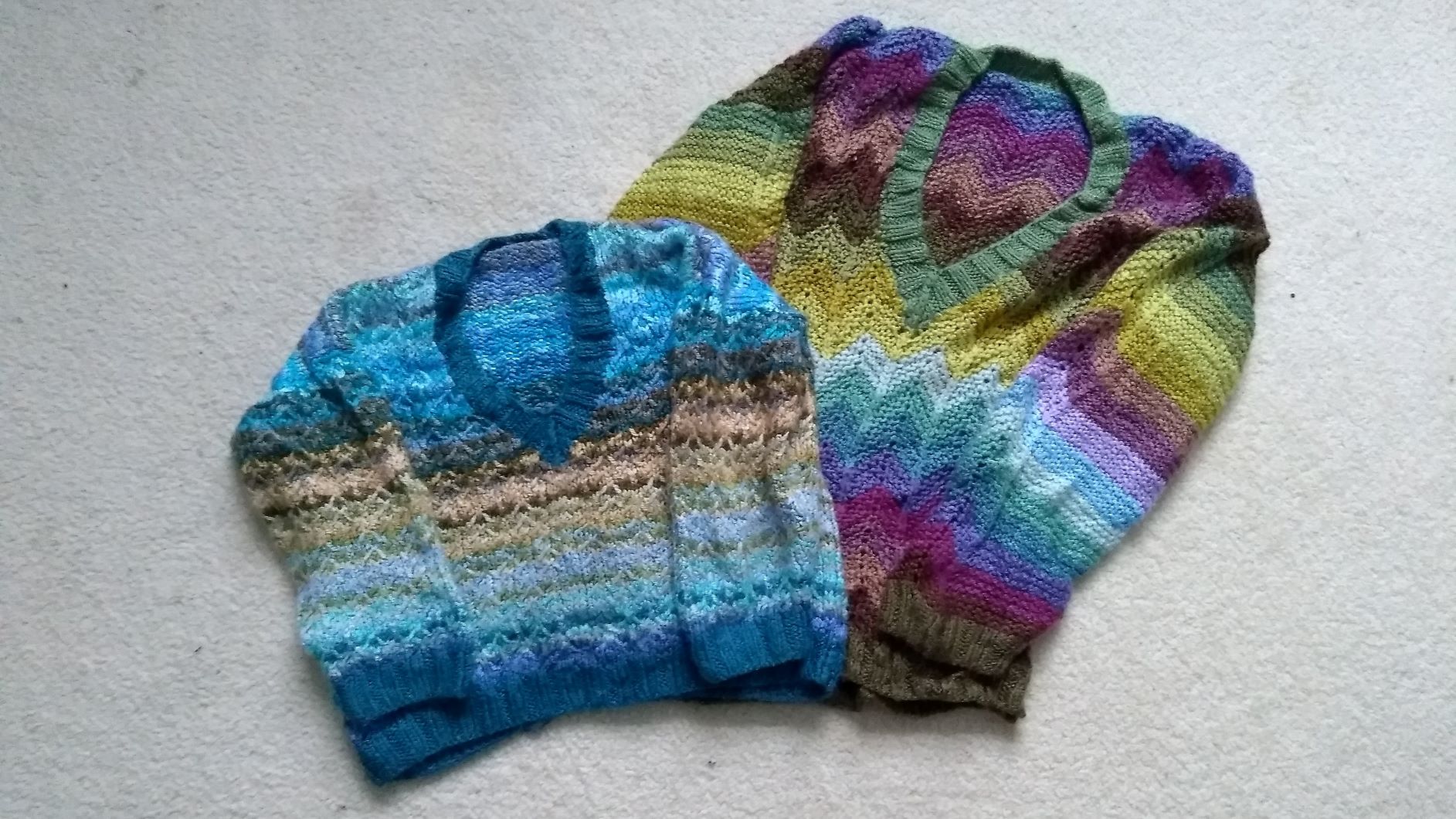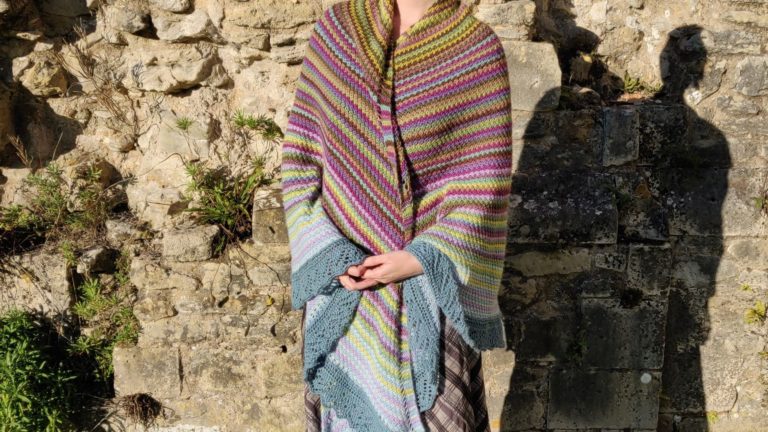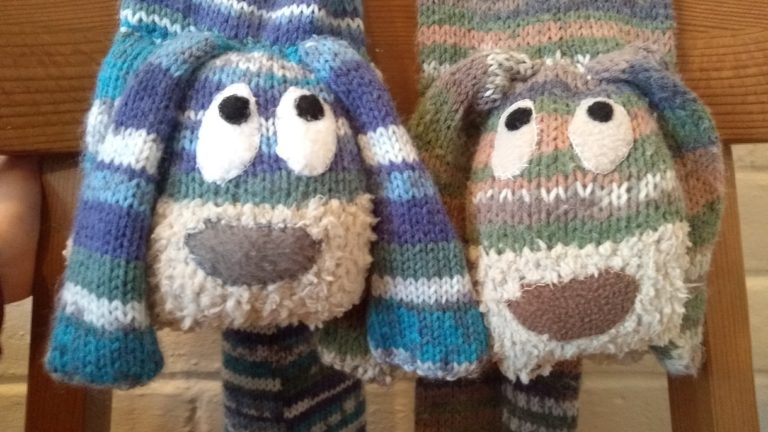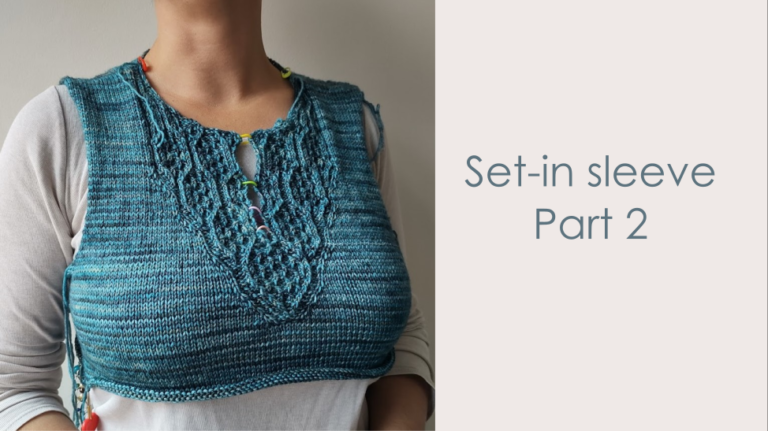I found myself with oddments left over from two Attic24 colour packs: the moorland pack, from knitting my Moorland Faroese Shawl and the coast pack, left over from making the blanket. Clearly there had to be a plan for using up the scraps, and the obvious choice was to make jumpers for Monster and Menace. I have a go-to children’s jumper pattern from Sirdar for a lovely v-neck jumper. We like v-neck jumpers in this house as the neck is nice and wide for wriggly boys to get out off without getting stuck, with the added bonus of no fiddly buttons. I decided to follow the pattern more or less for sizing, but to play around with stitch patterns and colour to make the most of the yarn.
Moorland Children’s Jumper Pattern
There was more of the moorland pack left over, and so I used this wool for Monster, as this would be the biggest jumper. I decided to have a colour progression from browns and purples, through the blues and on to the greens before returning to the browns. In the end, I used different colour sequences for the body and arms. The full sequences are given below.
Main body
- kharki
- walnut
- mocha
- grape
- plum
- violet
- storm blue
- sage
- duck egg
- pistachio
- lime
- meadow
Arms
- kharki
- walnut
- plum
- violet
- storm blue
- sage
- duck egg
- cloud blue
- wisteria
- grape
- mocha
- lime
- pistachio
- meadow
- cypress
After starting the ribbing with kharki, I realised that a mid-tone colour would look better around the neck. As I had found it hard to place cypress in the colour sequence this seemed perfect for the neck band.
I worked the stripes in a chevron pattern in garter stitch. This meant that the garter stitch ridges helped to highlight the zigzag pattern. For the arms, I used garter stitch with a single chevron running down the centre of the arm as this made the increases easier to work.
I had found it challenging (a bit of an understatement) to work out the neck shaping. Two things conspired against me. Firstly, the the chevron stitch pattern has a variable number of stitches on each row – there is an increase on the right side, and a decrease on the wrong side. Secondly, the neck shaping did not always allow for the rows to return to the original number of stitches. However, a bit of maths, a lot of sketching and some improvisation on the fly and a serviceable neck shaping was achieved. It was nice to be able to avoid all of this with the arms though.
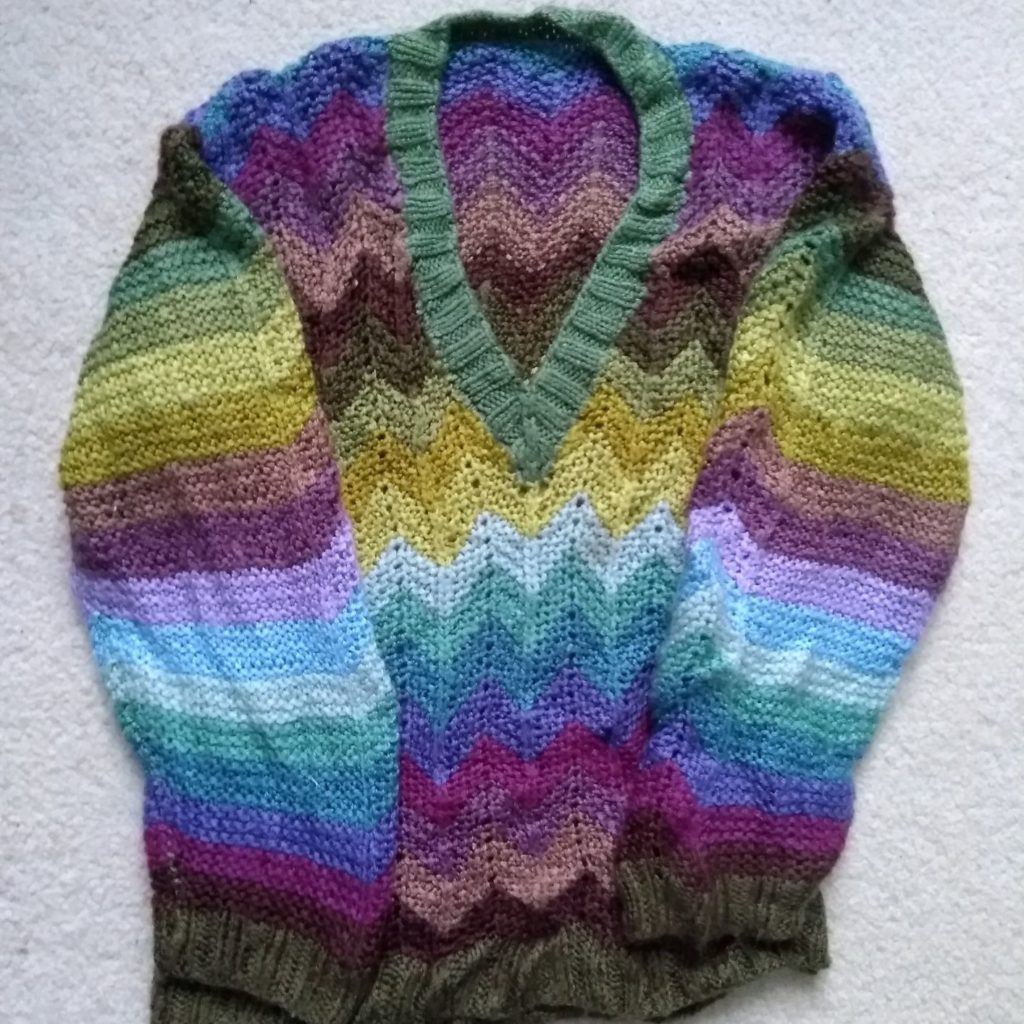

The stitch pattern for the chevron is given below. The repeat for the stitch pattern is given between brackets. Each stripe is six rows wide.
1st row: k4, ssk, (k9, cdd), k9, k2tog, k4
2nd row: k4, (p1, k4, [k1,yo,k1] all in same stitch, k4), p1, k4
I really like the happy accident that has placed the green stripes together on the body and arms. This was not planned, but looks like it was. Altogether, I am pleased with how this jumper has turned out.
Coast children’s jumper pattern
For Menace, I used up the coast pack and I think these colours work better in a semi-random sequence of stripes. For this jumper, I wanted to create a tweedy-look with a gentle colour change. To achieve this, I used a slip stitch pattern, which made the rows of the stocking stitch varying heights, and also allowed me to lift the colour into higher lines.
As before, the repeat for the stitch pattern is given in brackets, the stitch pattern is:
Setting up the stitch pattern:
1st row: k
2nd row: p1, (slip 3 wyb, p3) p1
3rd row: k
Repeat these rows:
4th row: p4 (slip 3 wyb p3), slip 3 wyb, p1
5th row: (k5, insert left hand needle under loose strand from slipped sts on row 2, lift on to needle and k2-tog-tbl [the strand just lifted and the first st on needle]), k2
6th row: p1 (slip 3 wyb, p3), p1
7th row: k2 (pick up slipped strand from row 4, k2-tog-tbl, k5)
In order to make a gentle colour change (and to minimise ends) I used each colour four times in stripes varying distances apart,with sequences which interlock into each other. Each stripe is two rows wide (the knit and return in purl). The colour sequence is:
Stripe sequence for one colour
- colour A
- four intervening stripes
- A
- one intervening stripe
- A
- two intervening stripes
- A
Example sequence of colours interlocking together
- A
- B
- C
- B
- D
- A
- B
- A
- E
- D
- A
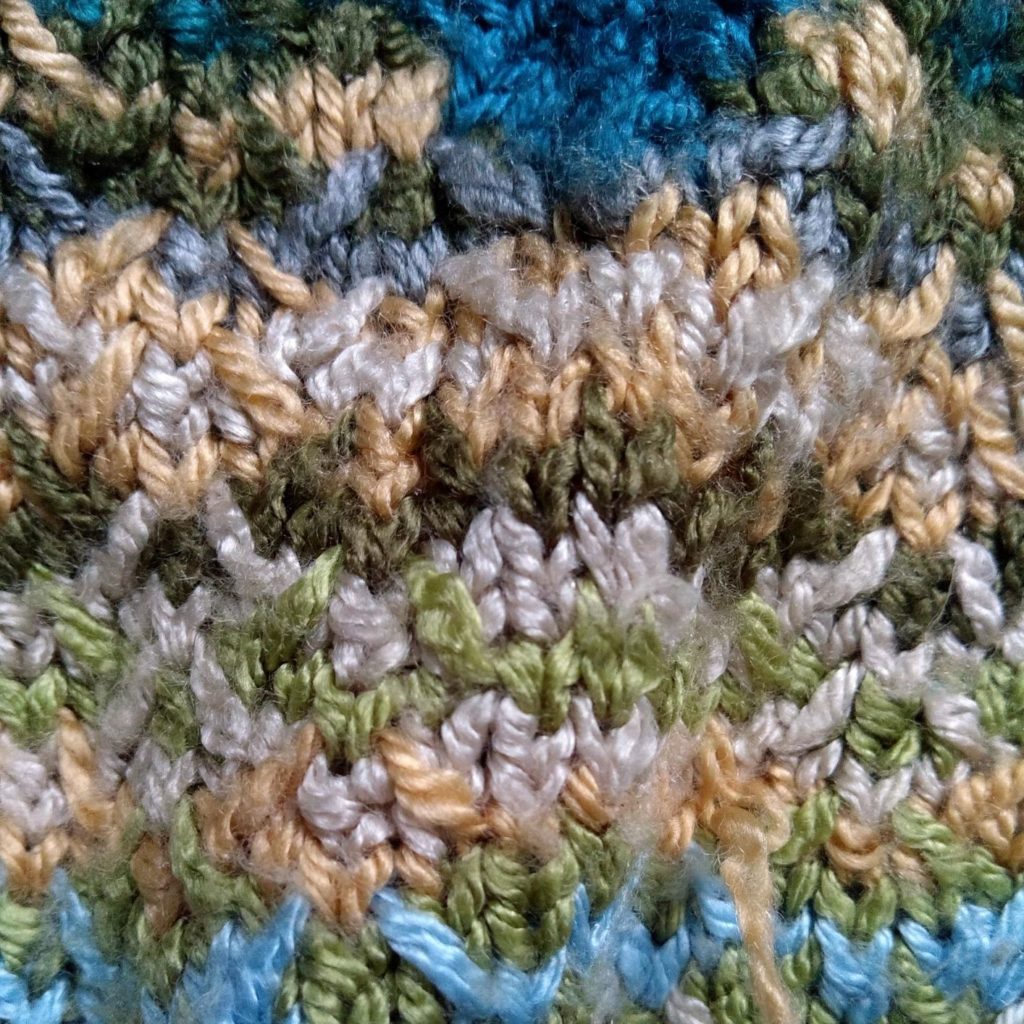

I followed the suggested order from Attic24 for the coast blanket for the colour stripes with some adjustments to allow for the varying amounts of yarn I had left over.
This stitch gives a result that looks quite complicated, but is actually very easy and quick to knit. Again, I was really pleased with the overall look of this jumper. The stitch pattern and random colour ordering really made the jumper look the way I had pictured it in my head.

